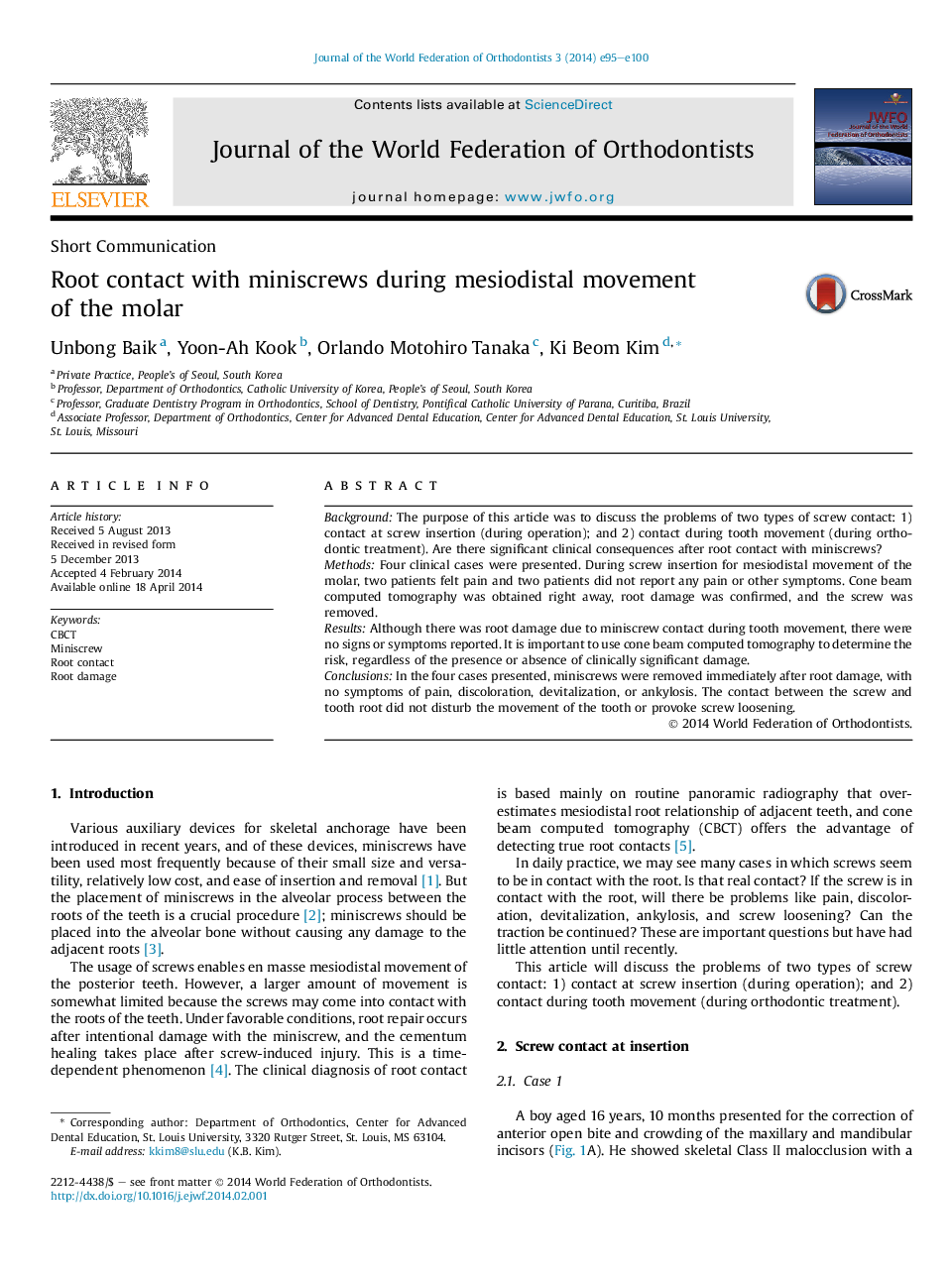| Article ID | Journal | Published Year | Pages | File Type |
|---|---|---|---|---|
| 3484929 | Journal of the World Federation of Orthodontists | 2014 | 6 Pages |
BackgroundThe purpose of this article was to discuss the problems of two types of screw contact: 1) contact at screw insertion (during operation); and 2) contact during tooth movement (during orthodontic treatment). Are there significant clinical consequences after root contact with miniscrews?MethodsFour clinical cases were presented. During screw insertion for mesiodistal movement of the molar, two patients felt pain and two patients did not report any pain or other symptoms. Cone beam computed tomography was obtained right away, root damage was confirmed, and the screw was removed.ResultsAlthough there was root damage due to miniscrew contact during tooth movement, there were no signs or symptoms reported. It is important to use cone beam computed tomography to determine the risk, regardless of the presence or absence of clinically significant damage.ConclusionsIn the four cases presented, miniscrews were removed immediately after root damage, with no symptoms of pain, discoloration, devitalization, or ankylosis. The contact between the screw and tooth root did not disturb the movement of the tooth or provoke screw loosening.
